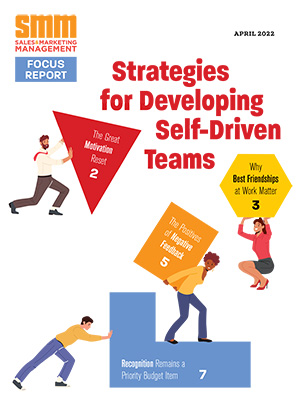After nearly two decades of working with thousands of sales teams across SME, mid-market and enterprise organizations, I’ve come to a counterintuitive realization: When sales teams seek help with negotiations, they’re often zeroing in on the wrong issue.
Sales leaders often tell me, “We need help with negotiation. We need to be sharper.” But here’s the key insight I’ve gained: negotiation itself isn’t the core problem; it’s a symptom of something larger. Let me illustrate with a recent example.
Recently, I worked with a team selling business software that was frustrated by what they saw as a “tough negotiation.” The buyer kept saying things like, “We don’t see much difference between you and other vendors,” and “We’re not sure your software can deliver the outcomes we need.”
Instead of diving into pricing, we took a different approach: revisiting the buyer’s business goals and expected ROI. Rather than simply responding to what was stated, they worked to understand what was underneath the pushback. Within a week, the deal closed – not because we had tougher negotiators, but because the team connected with the value that mattered most to the buyer.
The Value-First Framework: Building Your Mountain
RAIN Group’s research uncovered a powerful insight: 62% of buyers agree they have the flexibility to pay more if the seller demonstrates why doing so is worth it. Imagine value as building a mountain – the higher and more solid the foundation, the stronger your position when price discussions arise.
Yet, too often, sellers try negotiating from a molehill instead of a mountain. In my work with sales teams worldwide, I see three common mistakes that hinder effective value building:
1. Not Building Value Early Enough
Many sellers kick the can down the road, delaying the establishment of clear value propositions and leading to price-focused negotiations later. The time to start building your mountain isn’t when price comes up, it’s in your very first conversation with the buyer.
2. Focusing on Solutions Instead of Outcomes
While many proudly call themselves solution sellers, I challenge them to shift focus. Buyers don’t purchase solutions – they invest in outcomes. A global insurance executive shared a key insight: “We were really good problem-solvers, but lacked understanding of our buyers’ aspirations.” When they started combining both – addressing problems while helping realize aspirations – their entire sales dynamic (and results) changed.
3. Shallow Needs Discovery
Recently, I spoke with an experienced seller who dismissed needs discovery as “basic stuff you learn in year one.” This mindset leads to surface-level discovery that overlooks deeper needs and value. Each additional layer you uncover adds to your mountain of value, making price discussions far easier to navigate.
Essential Rules for Modern Sales Negotiations
After decades of research, observation and analysis, we’ve identified Six Essential Rules of Sales Negotiation. While each rule is vital to negotiation success, I’ll focus on three that are particularly effective in protecting margins: building value, leading the negotiation and trading – not caving. Mastering these rules forms a strong foundation for successful negotiations that preserve both relationships and margins.
Building Value Through Differentiation
Sellers often say, “We are different because we’ve done this before and can do it for you.” But put yourself in the buyer’s shoes – every seller says that. Showing case studies and past successes isn’t enough to stand out.
True differentiation lies in presenting what we call the “new reality” — the future your solution makes possible for the buyer. For instance, instead of focusing on cloud storage specifications, paint a vision of the buyer’s business with doubled user capacity, zero downtime and unlimited scalability. This shift helps buyers see the unique value you bring.
Leading the Negotiation Through Preparation
Our data shows that top performers are 3.5x more likely than others to be extremely confident in negotiations. This confidence isn’t from innate talent; it’s from meticulous preparation.
Before entering any sales negotiation, focus on:
- Understanding who’s involved and their decision-making authority
- Identifying the type of negotiation you’re entering (partner, positional, or mixed)
- Mapping out potential issues and preparing responses
- Having multiple options and alternatives ready to discuss
In my own negotiations, I’ve developed an approach that emphasizes listening over talking. Rather than dominating the conversation, I ask targeted questions and closely observe body language and communication patterns. Recently, in a $200 million bid, this approach helped a client navigate a complex buying committee where some stakeholders prioritized partnership, while others focused solely on price.
Trading vs. Caving: The Power of Options
Here’s where your “mountain of value” becomes crucial. The higher the value you’ve built, the more options you have for trading instead of simply discounting. Consider two types of trades:
Tangible Trades:
- Payment terms
- Delivery schedules
- Service levels
- Implementation timing
Intangible Trades:
- Business continuity assurance
- Access to senior expertise
- Peace of mind
- Strategic partnership benefits
One of our engineering clients uses this strategy effectively. When pressured on price, they offer a choice: “We can deliver faster and at a lower price but would need to reduce testing hours. Alternatively, we can maintain thorough testing for quality assurance at the original price point.” This approach reframes the conversation from pure price to valuable trade-offs.
Real-World Impact: The Power of Value-Based Negotiation
Consider a recent example from our work in cloud storage. Two sellers approached the same $1.2 million opportunity. The first focused on technical specs and settled at $990,000. The second, using our value-based approach, emphasized business outcomes: enabling user growth, minimizing downtime and increasing throughput for scalability.
The result? The second seller closed the deal at $1.125 million – a 12% higher price for the same solution. The difference wasn’t in the product or even negotiation tactics; it was in how they built and demonstrated value from the outset.
Moving Forward: Your Action Plan
To improve your negotiation outcomes, follow these five tips:
- Begin building your “mountain of value” from the very first customer interaction.
- Map out both problems and aspirations for each key stakeholder.
- Prepare specific trades ahead of any negotiation.
- Lead with questions rather than defensive responses when facing objections.
- Document your value differentiators from the customer’s perspective, not yours.
Remember: when a buyer says, “We don’t have the budget,” they’re really saying, “We don’t see enough value to justify your price.” Your goal isn’t to concede on price – it’s to build such a compelling mountain of value that your price reflects the tangible outcomes you’ll deliver.
By shifting your focus to building and articulating value throughout the sales cycle, you can transform your negotiation outcomes and protect your margins. Success in negotiations isn’t about being tougher; it’s about being smarter in how and when you create value.





